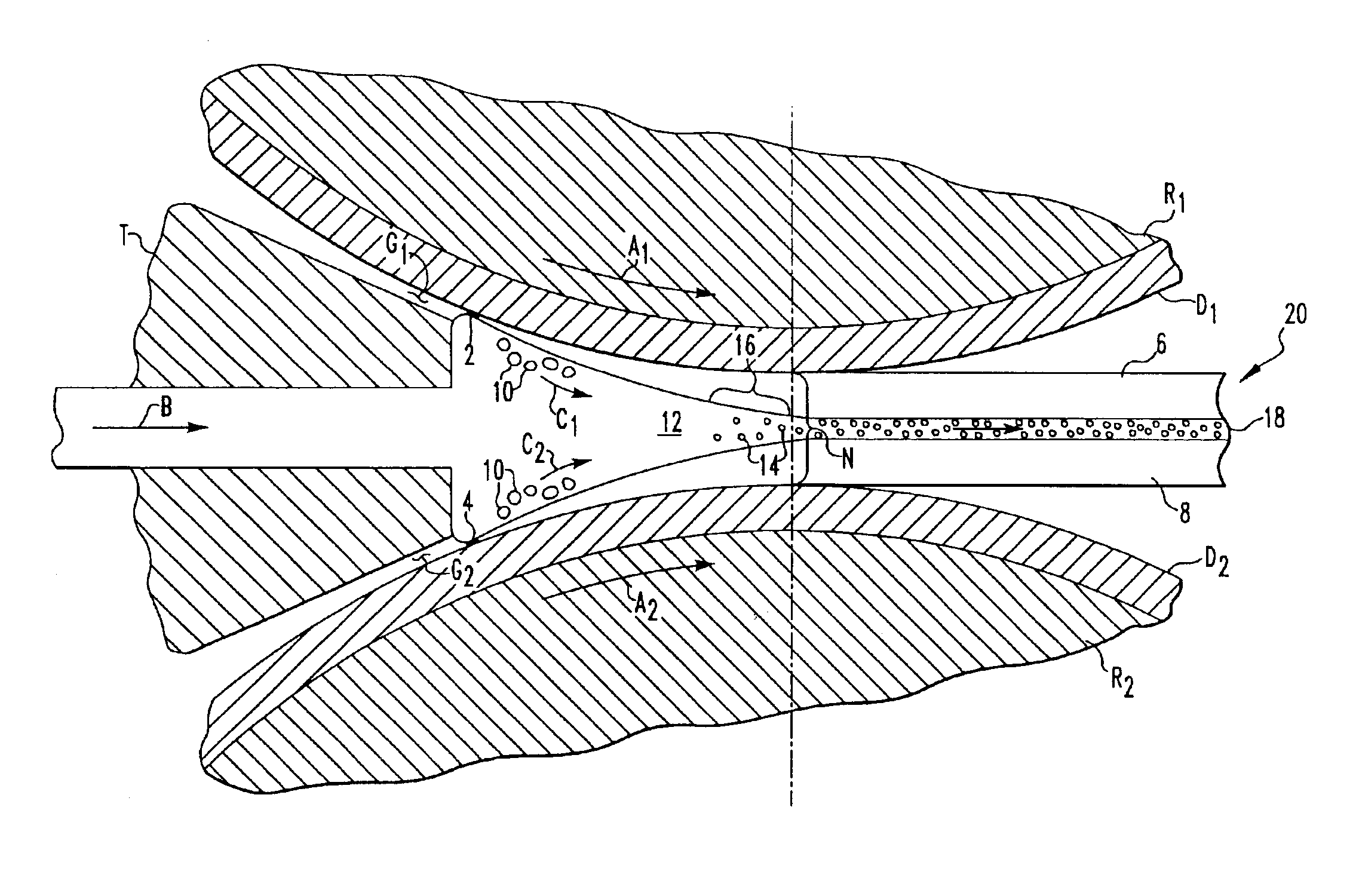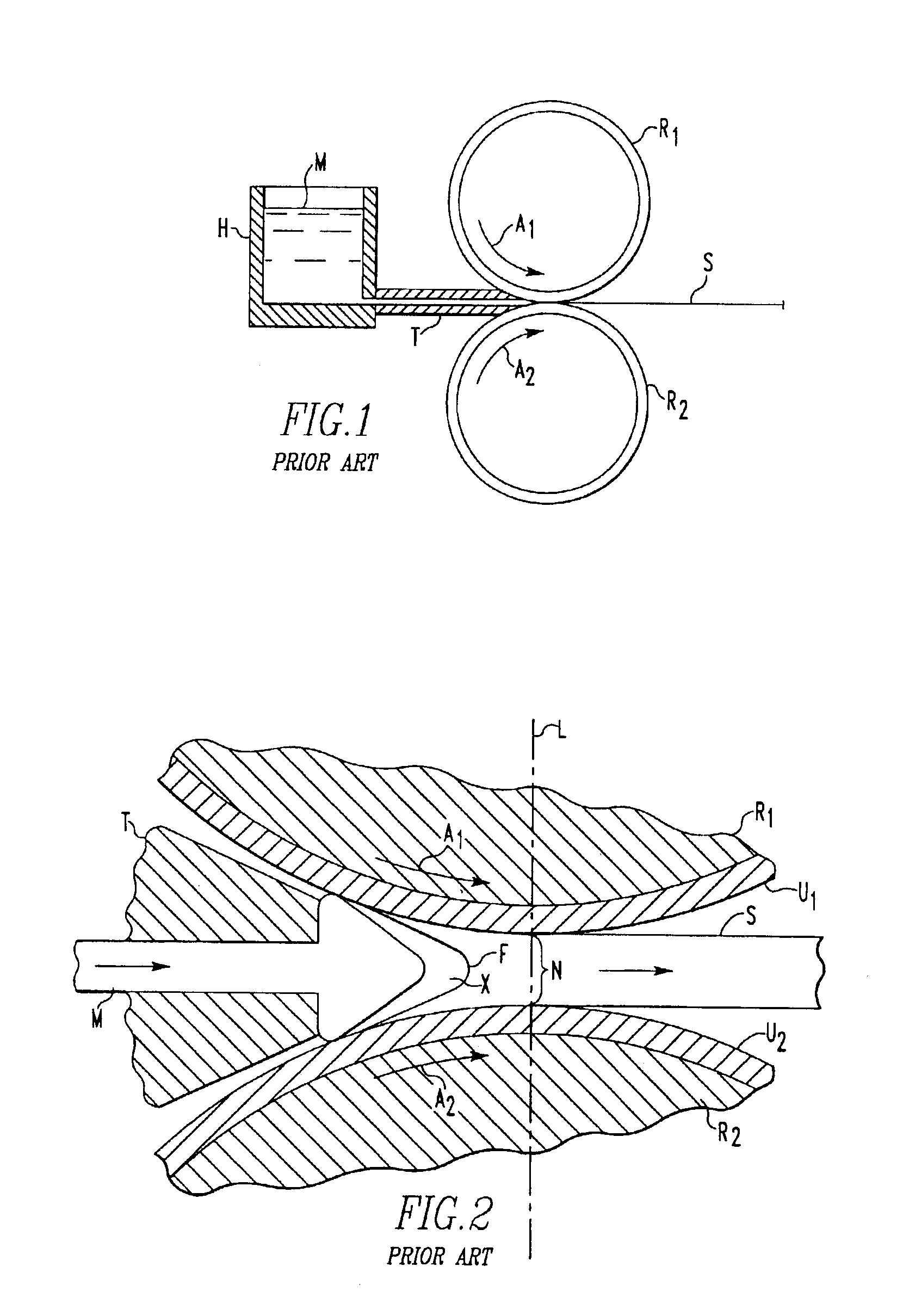Casting of non-ferrous metals
- Summary
- Abstract
- Description
- Claims
- Application Information
AI Technical Summary
Benefits of technology
Problems solved by technology
Method used
Image
Examples
examples
[0051]An aluminum alloy containing by wt. % 0.75 Si, 0.20 Fe, 0.80 Cu, 0.25 Mn and 2.0 Mg was cast according to the present invention and then hot and cold rolled in-line to 0.015 inch gauge. The resultant properties for two products are listed in Table 1. Example 1 shows properties obtained in the as-rolled condition after coil cooling. The combination of high strength and good formability (elongation) is notable. The combination of high yield strength and elongation achieved in Examples 1 and 2 has heretofore not been achieved in 5xxx series aluminum-magnesium alloys. By way of comparison, aluminum alloy 5182, at best, has a yield strength of 54 ksi and elongation of 7%. Example 2 shows properties obtained after the sheet was solution heat treated and aged at 275° F. in the laboratory. Good yield strength and superior bending properties were achieved.
[0052]
TABLE 1PropertyExample 1Example 2Yield strength (ksi)6043UTS (ksi)6555Elongation (%)1016Bend radius (r / t) 1.7 0.3*Ludering lin...
PUM
| Property | Measurement | Unit |
|---|---|---|
| Temperature | aaaaa | aaaaa |
| Fraction | aaaaa | aaaaa |
| Linear density | aaaaa | aaaaa |
Abstract
Description
Claims
Application Information
 Login to View More
Login to View More - R&D
- Intellectual Property
- Life Sciences
- Materials
- Tech Scout
- Unparalleled Data Quality
- Higher Quality Content
- 60% Fewer Hallucinations
Browse by: Latest US Patents, China's latest patents, Technical Efficacy Thesaurus, Application Domain, Technology Topic, Popular Technical Reports.
© 2025 PatSnap. All rights reserved.Legal|Privacy policy|Modern Slavery Act Transparency Statement|Sitemap|About US| Contact US: help@patsnap.com



